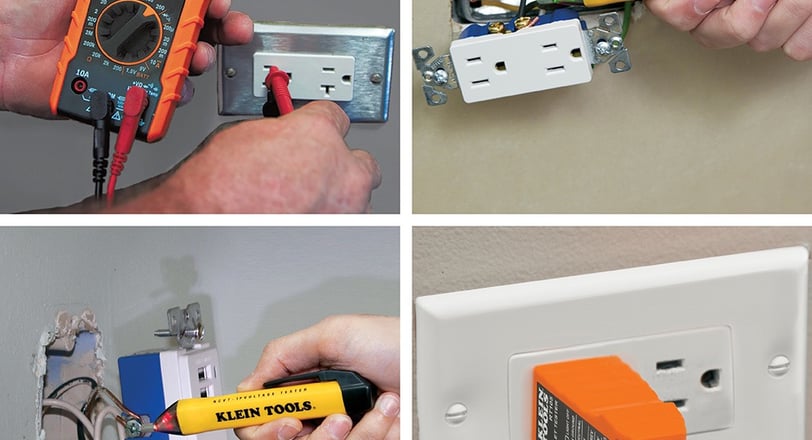How to Use a Voltage Tester (Safely)
The first step when you plan to work on electrical systems in your home is to select a voltage tester as your essential instrument. Voltage testing is the quickest and most secure method to verify whether power flows through a wire or device. This guide delivers comprehensive instructions for correct voltage tester usage and stresses important safety guidelines.
FREE GUIDE
4/10/20253 min read


What Is a Voltage Tester?
Handheld voltage testers allow users to measure electrical voltage in wiring systems and components, including outlets and switches. There are two main types:
· Users can safely identify electrical voltage on metal surfaces using a non-contact voltage tester called a “tick tracer.” When activating the device, maintain proximity to the wire or outlet.
· A contact voltage tester needs a physical connection to a wire or terminal. Some devices function through illumination, whereas others show measurements via needle gauges or digital displays.
Homeowners should consider purchasing non-contact voltage testers. Basic functions operate seamlessly in these devices while they provide dependable safety performance.
Safety First: Read This Before You Begin
Treat all wires as live power sources until you verify their safety through testing.
Before using your voltage tester:
1. Switch off the power at the breaker box before starting work in your targeted area.
2. Place a tape or tag on the breaker switch to prevent others from reconnecting power.
3. Safety glasses and rubber-soled shoes are necessary protective gear for work inside basements or garages.
Now, let’s get into the steps.
Step-by-Step: How to Use a Non-Contact Voltage Tester
Step 1: Test Your Tester (Seriously)
The voltage tester must be checked for operational status before you use it.
· Attach your phone charger or lamp to a power outlet that you have verified as functional.
· Turn it on so power is flowing.
· For proper operation, place the tester next to the cord or plug.
· A functioning voltage tester shows light and makes a sound when it finds voltage.
When the voltage tester doesn’t respond, install new batteries or acquire a replacement tester. Never skip this step.
Step 2: Verify the Power Is Off
Find the specific electrical outlet, switch, or wire where you will perform your work.
· For accurate readings, align the tester next to the hot wire or plug slot.
· When the tester does not emit a beep or light, it indicates a power deficiency.
· To ensure your electrical setup remains safe, you must test both neutral and ground wires.
Tip: Test every wire with a tester and include green and white wires in your checks. Occasionally, wiring mistakes result in neutral wires carrying electrical voltage.
Step 3: Confirm Power Is Off—Twice
Once you’ve switched off the breaker and double-checked that the wires have no remaining voltage, you can proceed with your work.
· Momentarily flip on the breaker to carry out further testing with your current tester.
· Turn off the power switch before you complete another test.
The double-check method validates the accuracy of your initial circuit testing procedure.
How to Use a Contact Voltage Tester (If You Have One)
These devices function by using two probes connecting wires or terminal points during operation.
1. The correct procedure requires placing a probe into the outlet’s smaller slot when testing its hot side.
2. Place the second probe into the neutral position, which features the wide slot, or connect to a ground connection.
3. A light display, a meter reading, or a digital number shows that power remains connected to the outlet.
Be careful: Working close to active electrical voltage is necessary to operate this tester.
Common Mistakes to Avoid
· Not testing your tester before use.
· Assuming a wire is safe because it “looks neutral.”
· Touching bare wires while testing (don’t).
· Relying only on a wall switch to cut power—always use the breaker.
Final Word: Trust But Verify
A voltage tester is your first line of defense against electrical shock. Always verify it’s working before you use it, and never assume a wire is dead just because the switch is off or it “looks safe.”
When in doubt—shut off the main breaker and work in daylight or with battery-powered lights. It’s better to spend an extra minute checking than to end up on the wrong end of a live wire.
ShockTalk: Your Code-Safe Guide
We help electricians, contractors, and DIYers build safer systems with real-world electrical expertise and simplified NEC guidance.
Expertise
Want Tips from a Master Electrician?
Email: info@shocktalk.org
Support Hours: Mon–Fri, 8am–6pm CST
817-716-1579
© 2025. All rights reserved.
